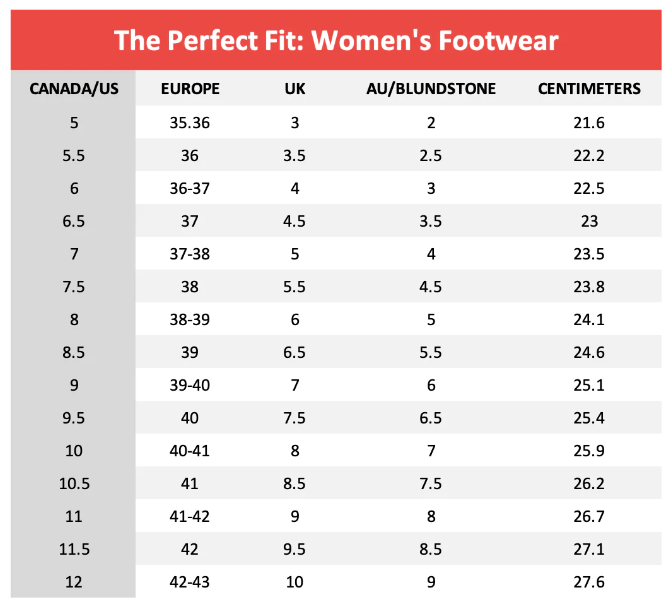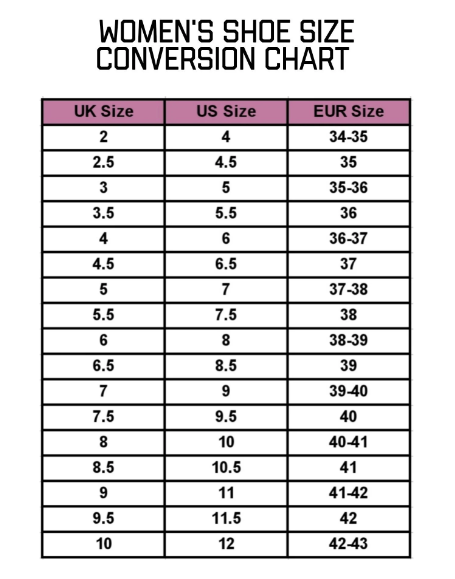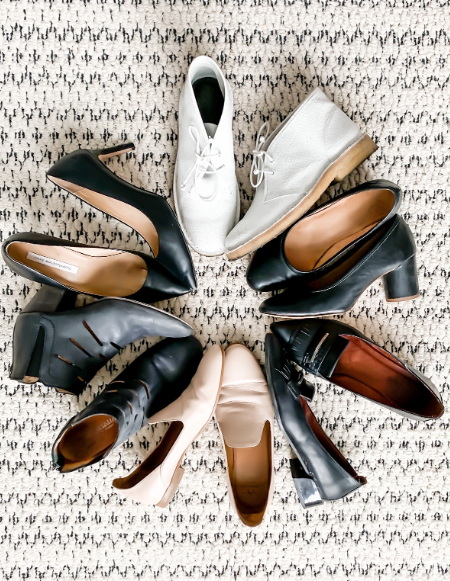Content Menu
● Understanding Women's Shoe Sizes
>> Shoe Size Conversion
● Measuring Your Feet
● Common Starting Sizes
● Factors Influencing Shoe Size
● Width Options
● The Importance of Trying Shoes On
● Online Shopping Tips
● The Role of Footwear Type in Sizing
● Caring for Your Feet
● The Impact of Fashion Trends on Shoe Sizes
● The Psychology of Shoe Shopping
● Conclusion
● FAQ
>> 1. What is the most common women's shoe size?
>> 2. How do I know if I need wide or narrow shoes?
>> 3. Can my shoe size change over time?
>> 4. How should I measure my feet for accurate sizing?
>> 5. Do different countries have different sizing systems?
When it comes to women's footwear, understanding shoe sizes can be a daunting task. With various sizing systems across different countries and brands, it is essential to know where to start. This article will explore the beginning of women's shoe sizes, how to measure your feet, and provide a comprehensive guide to finding the perfect fit.

Understanding Women's Shoe Sizes
Women's shoe sizes typically begin at size 4 in the US sizing system, which corresponds to a UK size 2 and an EU size 35. However, many brands start their offerings at size 5 or 5.5. This variation can lead to confusion, especially for those shopping online or unfamiliar with the sizing differences.
Shoe Size Conversion
To better understand how sizes convert between different systems, here's a quick reference:
| US Size | UK Size | EU Size |
| 4 | 2 | 35 |
| 5 | 3 | 36 |
| 5.5 | 3.5 | 36.5 |
| 6 | 4 | 37 |
| 6.5 | 4.5 | 37.5 |
| 7 | 5 | 38 |
| 7.5 | 5.5 | 38.5 |
| 8 | 6 | 39 |
| 8.5 | 6.5 | 39.5 |
| 9 | 7 | 40 |
| ... | ... | ... |
This table illustrates how sizes correspond across the US, UK, and EU systems, enabling easier navigation when purchasing shoes from different regions.
Measuring Your Feet
To find your correct shoe size, measuring your feet accurately is crucial. Here's a step-by-step guide:
1. Gather Materials: You will need a piece of paper larger than your foot, a pencil, and a ruler or measuring tape.
2. Trace Your Foot: Place the paper on a flat surface and stand on it with your weight evenly distributed. Trace around your foot carefully.
3. Measure Length and Width: Use the ruler to measure the longest distance from heel to toe (length) and the widest part of your foot (width).
4. Find Your Size: Compare your measurements against a shoe size chart to determine your appropriate size.
For visual guidance, you can watch instructional videos on platforms like YouTube that demonstrate this process effectively.
Common Starting Sizes
While women's shoes can start as small as size 4 in some brands, most commonly they begin at size 5 or 5.5:
- Steve Madden: Most styles start at size 5.5, with some available in whole sizes starting from 5.
- Clarks: Their women's shoes typically begin at size 3, which is equivalent to US size 5.
- Zappos: Offers a range starting from size 4, but many styles are available starting from 5.
Factors Influencing Shoe Size
Several factors can influence which shoe size you should choose:
- Foot Shape: Feet come in various shapes; some may be wider or narrower than average, affecting sizing.
- Brand Differences: Different brands may have slight variations in their sizing charts; always check individual brand charts before purchasing.
- Style of Shoe: Certain styles (e.g., heels vs flats) may fit differently even if they are marked the same size.
Width Options
In addition to length, shoe width is an important consideration for comfort:
- Standard Width (B): The most common width for women's shoes.
- Wide Width (D): For those with broader feet needing more room.
- Narrow Width (A): For women with slimmer feet requiring less space.
Selecting the correct width is just as critical as choosing the right length for overall comfort and fit.
The Importance of Trying Shoes On
Whenever possible, it is advisable to try shoes on before purchasing them. This allows you to assess comfort and support firsthand:
- Walk around in them to ensure they fit well without pinching or slipping.
- Consider trying shoes later in the day when your feet might be slightly swollen for a more accurate fit.

Online Shopping Tips
Shopping for shoes online can be convenient but comes with its challenges:
- Always refer to the specific brand's sizing chart.
- Read customer reviews regarding fit and comfort.
- If you're between sizes, consider ordering both and returning the one that doesn't fit well.
The Role of Footwear Type in Sizing
Different types of footwear may also have unique sizing characteristics:
- Athletic Shoes: Generally designed with more cushioning and support; they often run larger due to added padding. It's advisable to try them on while wearing athletic socks for an accurate fit.
- Dress Shoes: Often made from stiffer materials that may not stretch as much over time; these should fit snugly without being uncomfortable.
- Boots: Depending on their style (ankle vs knee-high), boots may require consideration of calf width as well as foot length for proper fitting.
Caring for Your Feet
Proper foot care is essential not only for comfort but also for health:
- Keep your feet clean and dry; moisture can lead to fungal infections.
- Trim toenails regularly and keep them straight to prevent ingrown nails.
- Use foot creams or lotions to maintain skin elasticity and prevent cracking.
The Impact of Fashion Trends on Shoe Sizes
Fashion trends can also influence shoe sizing and availability:
- Certain styles may become popular that require specific fits; for example, pointed-toe shoes may feel tighter than rounded styles even if they are labeled the same size.
- Seasonal trends can affect stock availability; during peak seasons like summer or winter holidays, certain sizes may sell out quickly.
The Psychology of Shoe Shopping
Shoe shopping is not just about finding the right fit; it also involves emotional factors:
- Many women associate shoe shopping with self-care or treating themselves; this can lead to impulse buys that might not consider proper sizing or comfort.
- Understanding personal style preferences versus practical needs can help make better purchasing decisions that align with both aesthetics and comfort.
Conclusion
Finding the right shoe size is crucial for comfort and health. Women's shoes generally start at size 4, but many brands begin at sizes 5 or 5.5. Measuring your feet accurately and understanding how different brands' sizes convert can help you make informed decisions when shopping for footwear.
Additionally, factors such as foot shape, width options, type of footwear, and even fashion trends play significant roles in determining what size will work best for you. Proper care for your feet ensures longevity in comfort while shopping tips enhance your online experience.
By considering all these aspects, you can confidently navigate the world of women's footwear and find shoes that not only look great but feel great too!

FAQ
1. What is the most common women's shoe size?
The most common women's shoe size in the US is typically around size 8, which represents a significant percentage of sales across various brands.
2. How do I know if I need wide or narrow shoes?
If you often experience discomfort or pinching in standard-width shoes, you may need wider options; conversely, if shoes feel loose or slip off easily, narrow widths might be more suitable.
3. Can my shoe size change over time?
Yes, factors such as weight gain/loss, pregnancy, and aging can affect foot shape and size over time; it's wise to measure regularly.
4. How should I measure my feet for accurate sizing?
Stand on a piece of paper and trace your foot's outline; measure from heel to toe for length and across the widest part for width before comparing these measurements against a sizing chart.
5. Do different countries have different sizing systems?
Yes, shoe sizes vary significantly between countries; always refer to conversion charts when shopping internationally to ensure proper fit.

















